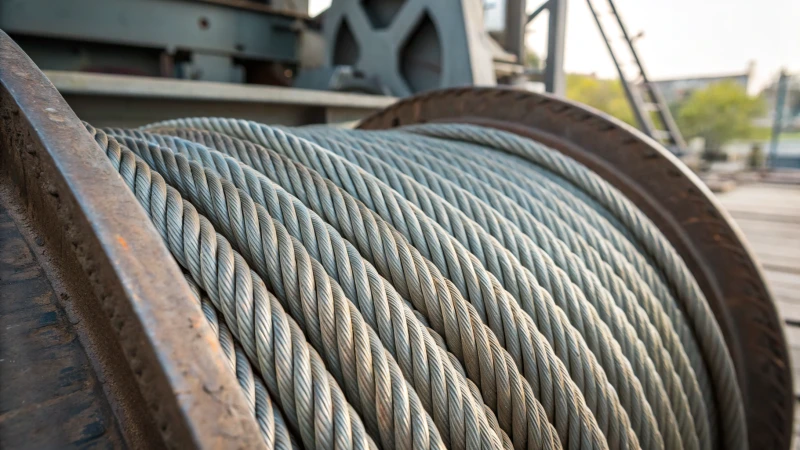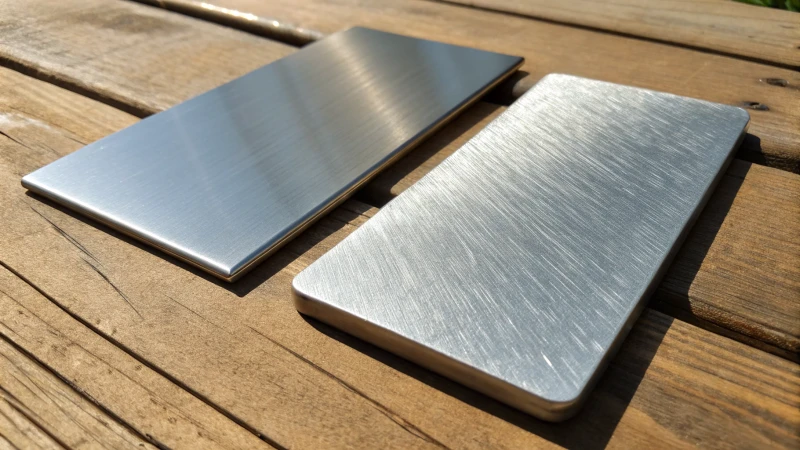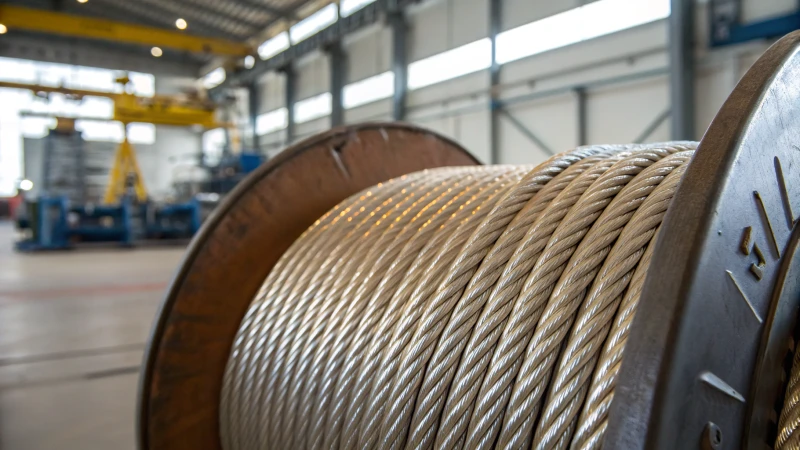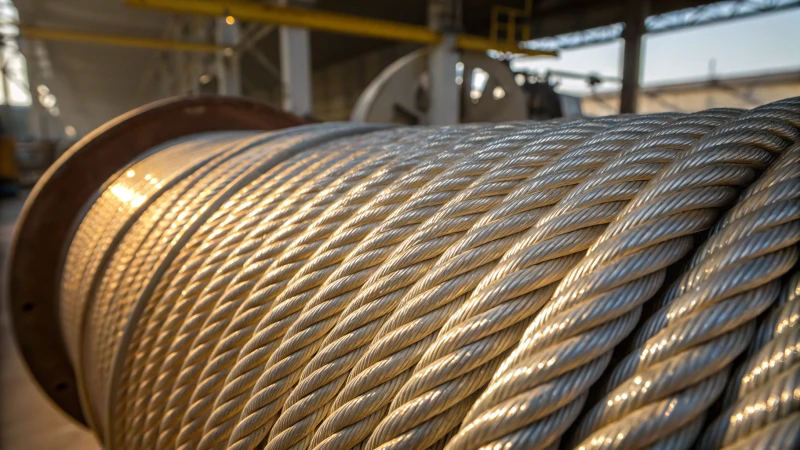
Ever wondered what keeps those elevator rides so smooth and safe? It all comes down to the humble wire ropes that work tirelessly behind the scenes.
To optimize fatigue resistance in elevator wire ropes, manufacturers use high-strength steel, polymer coatings, and advanced construction techniques like multistrand designs. These innovations enhance durability and prolong the lifespan of the ropes under repeated stress.
I remember when I first delved into the world of elevator wire ropes—it was like uncovering a hidden layer of complexity beneath every elevator ride. Choosing the right wire rope isn't just about strength; it's about understanding how these advanced materials and techniques come together to handle stress over time. Whether it's the high-strength steel or the clever use of polymer coatings, each component plays a crucial role in ensuring those ropes don't just last longer but also perform reliably day in and day out. Let me guide you through what makes these components indispensable for safety and efficiency in modern elevators.
Polymer coatings enhance wire rope fatigue resistance.True
Polymer coatings reduce friction and wear, enhancing durability.
High-strength steel is unnecessary for elevator wire ropes.False
High-strength steel is crucial for withstanding stress and wear.
What Materials Boost Fatigue Resistance?
Ever wondered what keeps the things we rely on from breaking under pressure? It's all about the materials that defy fatigue.
High-strength steel, polymer coatings, and multistrand configurations are key materials that enhance fatigue resistance. They improve load distribution and reduce internal friction, making them more durable under cyclic stress.

High-Strength Steel Alloys
You know that feeling when you've been running around all day, and by the end, your legs just give out? Well, that's what we're trying to avoid with materials—specifically, high-strength steel alloys. These alloys, like the ones used in elevator steel ropes1, are crafted to bear heavy cyclic loads without faltering. I remember reading about how elements like chromium and molybdenum are added to boost their strength and fatigue resistance. Picture them as the caffeine in your morning coffee, keeping everything strong and ready to go.
| Alloy Type | Key Elements | Fatigue Resistance |
|---|---|---|
| 4340 | Chromium | High |
| 300M | Molybdenum | Very High |
Polymer Coatings
Imagine wrapping yourself in a cozy blanket on a cold day—it's comforting and protective. That's what polymer coatings do for steel wire ropes. Coatings like nylon or PVC act as a barrier, reducing friction and wear during cyclic loading. I came across a study showing that polymer-coated ropes2 last up to 50% longer than their bare counterparts. It’s like wearing a raincoat; you stay dry and safe.
Multistrand Configurations
Multistrand configurations, such as 6×36 or 8×19 ropes, remind me of how a multi-layered blanket keeps you warmer. These designs offer better flexibility and distribute stress more evenly. I've seen how beneficial they are, especially in high-frequency use3 settings where bending cycles are frequent.
The increased flexibility allows these ropes to endure more bending cycles before failure, making them suitable for dynamic applications.
Composite Materials
Composite materials are the tech-savvy innovators of the material world. Combining elements like carbon-fiber-reinforced polymers gives them a high strength-to-weight ratio—imagine an ultra-lightweight jacket that’s impossibly warm. While they might be a bit pricey, their advantages in high-stress applications are undeniable.
In the end, picking the right material feels a lot like choosing the right gear for an adventure—it’s about balancing cost, performance, and specific needs. Each offers something unique to keep everything working smoothly under pressure.
High-strength steel alloys contain chromium for fatigue resistance.True
Chromium in steel alloys enhances tensile strength, reducing fatigue failure.
Polymer coatings decrease the fatigue life of steel ropes by 50%.False
Polymer coatings actually increase the fatigue life by up to 50%.
How do polymer coatings enhance wire rope performance?
Imagine the struggle of maintaining heavy-duty equipment, where every bit of efficiency counts. Polymer coatings are here to make that challenge a little easier by prolonging the life of wire ropes.
Polymer coatings boost wire rope performance by reducing friction, preventing corrosion, and enhancing flexibility. This leads to longer-lasting ropes, improved safety, and lower maintenance costs, especially in tough environments.

Understanding Polymer Coatings
Whenever I think about the countless hours spent ensuring equipment is in peak condition, I realize how much easier life becomes with the right materials. Polymer coatings on steel wire ropes act as a protective barrier. They're like the unsung heroes that keep everything running smoothly. Whether it's PVC or nylon, these coatings offer different benefits depending on what you need them for. But primarily, they’re there to reduce wear and prevent corrosion4, which is a game-changer for durability.
| Material | Properties | Applications |
|---|---|---|
| PVC | Flexible, weather-resistant | Construction, marine |
| Nylon | Strong, abrasion-resistant | Industrial, mining |
Enhancing Durability Through Friction Reduction
I remember the first time I saw a polymer-coated rope in action. It was fascinating to see how it reduced internal friction among the strands. The ropes seemed to last forever—up to 50% longer than uncoated ones. For industries that put ropes through repetitive loading cycles, this is not just beneficial; it’s essential.
Protection Against Environmental Factors
Living near the coast, I’ve witnessed firsthand the destructive power of saltwater on metal. Polymer coatings provide a robust shield against moisture, saltwater, and chemicals. They’re perfect for marine environments or any other harsh conditions where traditional ropes might not stand a chance. With less rust and corrosion, operations become much safer and replacements far less frequent.
Enhancing Flexibility and Safety
There's something comforting about knowing that the ropes you rely on are both flexible and safe. Coated wire ropes offer increased flexibility, making them smoother during operations. This reduces the risk of sudden snaps or breaks—a crucial factor when you're working with heavy machinery. It also makes installations and maintenance much more manageable.
Understanding ISO 18151 Standards5 for fatigue resistance can further help procurement managers choose the right coated ropes for specific applications.
Cost Implications and Maintenance
At first glance, polymer-coated ropes might seem like a more significant investment. However, their longevity and reduced maintenance needs often translate into cost savings over time. Less downtime and fewer replacements mean these ropes align perfectly with sustainability goals6. I’ve learned that sometimes paying a bit more upfront saves a lot more in the long run.
Polymer coatings increase wire rope fatigue life by 40-50%.True
Polymer coatings reduce internal friction, enhancing fatigue life by 40-50%.
Nylon coatings are ideal for marine environments.False
PVC, not nylon, is more suitable for marine due to weather resistance.
Why are multistrand configurations preferred for elevators?
Imagine stepping into an elevator and trusting your safety to the unseen ropes above. Ever wondered why multistrand configurations are often the go-to choice for this critical role?
Multistrand configurations are favored in elevators due to their enhanced flexibility, even load distribution, and superior fatigue resistance. These features ensure better performance and safety, extending the lifespan of the elevator system compared to single-strand alternatives.

Understanding Multistrand Ropes
It all started when I found myself nervously gripping the railing during a particularly bumpy elevator ride. Curious about what kept us suspended, I dove into the world of elevator mechanics. Multistrand configurations are fascinating because they involve several smaller strands twisted together, creating a rope that bends effortlessly—unlike its single-strand counterparts. This flexibility is crucial because it minimizes wear and tear from the elevator's constant up-and-down movement.
| Feature | Benefit |
|---|---|
| Flexibility | Reduces wear, extends lifespan |
| Load Distribution | Even tension, improved safety |
| Fatigue Resistance | Withstands cyclic loading better |
The Importance of Load Distribution
As I learned more, I realized that the beauty of multistrand ropes lies in their ability to distribute the load evenly across each strand. This design reduces stress on individual wires, preventing that terrifying snap you might imagine. With less internal friction, these ropes are perfect for withstanding the relentless cyclic loading7 typical in elevator operations. This balanced tension means a safer ride and a lower risk of rope failure.
Unmatched Fatigue Resistance
I remember chatting with an engineer friend who passionately explained how multistrand ropes, like the 6×36 or 8×19 types, excel at handling the constant start-stop nature of elevators. Their superior fatigue resistance means they can endure these stresses over time without compromising safety or functionality.
Material Innovations Elevating Performance
When I heard about high-strength steel and polymer coatings, it was like discovering a hidden layer of protection. According to ISO 18151 standards, these coatings enhance fatigue resistance by up to 50%. It’s like giving the ropes a superhero cape—durability and reduced friction rolled into one.
- High-Strength Steel: Provides durability
- Polymer Coatings: Reduce internal friction, increase life span
Incorporating these materials ensures multistrand ropes stay robust over time, making them an economically savvy choice for elevators that see heavy use daily. For me, understanding these intricacies made every elevator ride feel a bit more like magic—powered by science.
Multistrand ropes have better flexibility than single-strand ropes.True
Multistrand ropes are designed to bend more easily, reducing wear.
Single-strand ropes offer superior load distribution over multistrand.False
Multistrand configurations distribute loads evenly, minimizing stress.
What Industry Standards Ensure Optimal Wire Rope Quality?
Have you ever found yourself standing beneath a towering crane, pondering what ensures its cables don't snap? Let me walk you through the industry standards that make wire ropes reliable and safe.
The quality of wire ropes is guaranteed by industry standards like ISO 2408, which outlines specifications, and ASTM A1023/A1023M, detailing testing methods. These standards ensure tensile strength, fatigue resistance, and corrosion protection, promoting durability and safety.

Understanding Key Industry Standards
When I first delved into the world of wire ropes, I was amazed by the meticulous standards that govern their quality. Imagine you're John, a procurement manager in construction. Your project depends on these ropes for safety and efficiency. The ISO 2408 standard8 is your go-to guide, specifying what makes a rope fit for heavy-duty lifting, from its construction to the materials used. Meanwhile, the ASTM A1023/A1023M provides the blueprint for testing these ropes to ensure they can withstand the test of time and pressure.
| Specification | Requirement |
|---|---|
| ISO 2408 | Construction and Material |
| ASTM A1023 | Testing Methods |
Importance of Tensile Strength
Tensile strength is a cornerstone of wire rope manufacturing. Picture Emma, working in the harsh mining conditions of Australia. She needs ropes that can handle immense loads without snapping. The ISO 3108 standard9 is what ensures these ropes can do just that. It's critical in scenarios where failure isn't just inconvenient—it's catastrophic.
Enhancing Fatigue Resistance
Fatigue resistance is all about endurance. I remember Klaus, a heavy machinery procurement officer, explaining how multistrand ropes like 6×36 are his favorites due to their flexibility and stress distribution. The ISO 18151 standard10 offers guidance on enhancing this resistance, such as using polymer coatings that boost durability by as much as 50%.
Corrosion Protection Measures
Corrosion is a sneaky enemy, especially in marine and industrial settings. Think of Raj in India, procuring ropes for shipbuilding; he relies on standards like ASTM B63311 to ensure his ropes are galvanized against rust and environmental wear.
Future of Wire Rope Standards
The future beckons with new challenges and innovations. WonBon, my trusted brand, is right at the forefront, integrating high-strength polymers into new guidelines. The ISO TC10512 committee is actively shaping these future standards to ensure our ropes remain top-notch in quality and safety.
ISO 2408 focuses on wire rope tensile strength.False
ISO 2408 specifies construction and material properties, not tensile strength.
ASTM A1023 outlines wire rope testing methods.True
ASTM A1023/A1023M details testing methods for wire rope strength.
Conclusion
Elevator wire ropes achieve optimal fatigue resistance through high-strength steel, polymer coatings, and multistrand designs, enhancing durability and safety during repeated stress in elevator operations.
-
Discover why high-strength steel alloys are preferred in industries requiring enhanced fatigue resistance. ↩
-
Learn how polymer coatings extend the lifespan of steel wire ropes in cyclic loading scenarios. ↩
-
Explore how multistrand configurations distribute load effectively, improving fatigue resistance. ↩
-
Learn how polymer coatings protect against corrosion, crucial for enhancing rope durability. ↩
-
Understand ISO 18151 standards to ensure your wire ropes meet high fatigue resistance levels. ↩
-
Discover how using polymer-coated ropes supports environmental sustainability initiatives. ↩
-
Learn about the benefits of multistrand configurations in managing cyclic loading in elevators. ↩
-
Explore ISO 2408 to understand specifications for lifting and rigging ropes, essential for construction. ↩
-
Discover ISO 3108's guidelines on measuring tensile strength, crucial for safety in heavy applications. ↩
-
Learn about enhancing fatigue resistance with polymer coatings, vital for high-frequency use. ↩
-
Delve into ASTM B633 for galvanizing practices that protect wire ropes from corrosion. ↩
-
Gain insights into future standards developed by ISO TC105, integrating advanced materials. ↩

